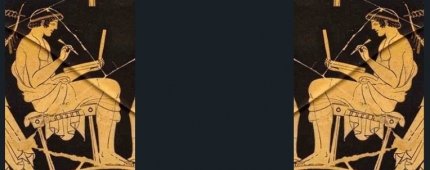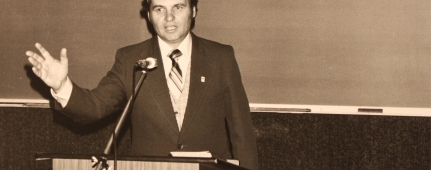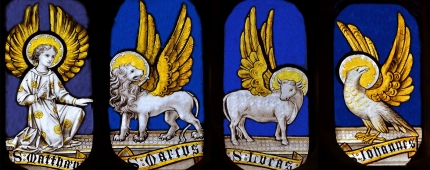THE ROLE OF EXTRA-BIBLICAL GENRE
What is Genre Criticism? It is a recent view based on the writings of critical New Testament Scholars like Richard A. Burridge and championed by evangelical scholar Mike Licona. Although he claims to be an inerrantist, Licona clearly does not follow the ETS or ICBI view on the topic. He argues that “the Gospels belong to the genre of Greco-Roman biography (bios)” and that “Bioi offered the ancient biographer great flexibility for rearranging material and inventing speeches…, and they often include legend.” But, he adds “because bios was a flexible genre, it is often difficult to determine where history ends and legend begins” (Licona, The Resurrection of Jesus, 34).
This led him to deny the historicity of the story of the resurrection of the saints in Matthew 27:51-53 (ibid., 527-528; 548; 552-553), and to call the story of the crowd falling backward when Jesus claimed “I am he” (John 14:5-6) “a possible candidate for embellishment” (ibid., 306) and the presence of angels at the tomb in all four Gospels may be “poetic language or legend” (ibid., 185-186).
Later, in a debate with Bart Ehrman (at Southern Evangelical Seminary, Spring, 2009), Licona claimed there was a contradiction in the Gospels as to the day of Jesus’ crucifixion. He said, “I think that John probably altered the day [of Jesus’ crucifixion] in order for a theological—to make a theological point here.” Then in a professional transcription of a YouTube video on November 23, 2012 (see http://youtu.be/TJ8rZukh_Bc), Licona added the following: “So um this didn’t really bother me in terms of if there were contradictions in the Gospels. I mean I believe in biblical inerrancy but I also realized that biblical inerrancy is not one [of the] fundamental doctrines of Christianity. The resurrection is. So if Jesus rose from the dead, Christianity is still true even if it turned out that some things in the Bible weren’t. So um it didn’t really bother me a whole lot even if some contradictions existed” (emphasis added).
Incompatible with Inerrancy
This popular Greco-Roman genre theory adopted by Licona and others is directly contrary to the CSBI view of inerrancy as clearly spelled out in many articles. First, Article 18 speaks to it directly: “We affirm that the text of Scripture is to be interpreted by grammatico-historical exegesis, taking account of its literary forms and devices, and that Scripture is to interpret Scripture” (emphasis added). But Licona rejects the strict “grammatico-historical exegesis” by which “Scripture is to interpret Scripture” for an extra-biblical system where Greco-Roman genre is used to interpret Scripture. Of course, “taking account” of different genres within Scripture, like poetry, history, parables, and even allegory (Gal. 4:24), is legitimate, but this is not what the use of extra-biblical Greco-Roman genre does. Rather, it uses extra-biblical stories to determine what the Bible means, even if using this extra-biblical literature means denying the historicity of the biblical text.
Second, the CSBI says emphatically that “We deny the legitimacy of any treatment of the text or quest for sources lying behind it that leads to relativizing, dehistoricizing, or discounting its teaching, or rejecting its claim to authorship” (Art. 18, emphasis added). But this is exactly what many non-inerrantists, like Licona, do with some Gospel events. The official ICBI commentary on this Article adds, “It is never legitimate, however, to run counter to express biblical affirmations” (emphasis added). Further, in the ICBI commentary on its 1982 Hermeneutics Statement (Article 13) on inerrancy, it adds, “We deny that generic categories which negate historicity may rightly be imposed on biblical narratives which present themselves as factual. Some, for instance, take Adam to be a myth, whereas in Scripture he is presented as a real person. Others take Jonah to be an allegory when he is presented as a historical person and [is] so referred to by Christ” (emphasis added). Its comments in the next article (Article 14) add, “We deny that any event, discourse or saying reported in Scripture was invented by the biblical writers or by the traditions they incorporated” (emphasis added). Clearly, the CSBI Fathers rejected genre criticism as used by Robert Gundry, Mike Licona, and many other evangelicals.
Three living eyewitness framers of the CSBI statements (J. I. Packer, R. C. Sproul, and N. L. Geisler) confirm that authors like Robert Gundry were in view when these articles were composed. Gundry had denied the historicity of sections of the Gospel of Matthew by using a Hebrew “midrashic” model to interpret Matthew (see Mohler on Franke, 294). After a thorough discussion of Gundry’s view over a two year period and numerous articles in the ETS journal, the matter was peacefully, lovingly, and formally brought to a motion by a founder of the ETS, Roger Nicole, in which the membership, by an overwhelming 74% voted and asked Gundry to resign from the ETS. Since Licona’s view is the same in principle with that of Gundry’s, the ETS decision applies equally to his view as well.
Mike Licona uses a Greco-Roman genre to interpreting the Gospels, rather than Jewish midrash which Gundry used. The Greco-Roman genre permits the use of a contradiction in the Gospels concerning the day Jesus was crucified. However, the ICBI official texts cited above reveal that the CSBI statement on inerrancy forbids “dehistoricing” the Gospels (CSBI Art. 18). Again, living ICBI framers see this as the same issue that led to Gundry’s departure from ETS. When asked about the orthodoxy of Mike Licona’s view, CSBI framer R.C. Sproul wrote: “As the former and only President of ICBI during its tenure and as the original framer of the Affirmations and Denials of the Chicago Statement on Inerrancy, I can say categorically that Dr. Michael Licona’s views are not even remotely compatible with the unified Statement of ICBI” (Personal Correspondence, 5/22/2012, emphasis added).
The role of extra-biblical genre in Gospel interpretation can be charted as follows:
THE USE OF EXTRA-BIBLICAL GENRE
| LEGITIMATE USE | ILLEGITIMATE USE |
| A MATERIAL CAUSE | THE FORMAL CAUSE |
| HELP PROVIDE PARTS | DETERMINES THE WHOLE |
| ILLUMINATES SIGNIFICANCE | DETERMINES MEANING |
The formal cause of meaning is in the text itself (the author is the efficient cause of meaning). No literature or stories outside the text are hermeneutically determinative of the meaning of the text. The extra-biblical data can provide understanding of a part (e.g., a word), but it cannot decide what the meaning of a whole text is. Every text must be understood only in its immediate or more remote contexts. Scripture is to be used to interpret Scripture.
Of course, as shown above, general revelation can help modify our understanding of a biblical text, for the scientific evidence based on general revelation demonstrates that the earth is round and can be used to modify one’s understanding of the biblical phrase “four corners of the earth.” However, no Hebrew or Greco-Roman literature genre should be used to determine what a biblical text means since it is not part of any general revelation from God, and it has no hermeneutical authority.
Further, the genre of a text is not understood by looking outside the text. Rather, it is determined by using the historical-grammatical hermeneutic on the text in its immediate context, and the more remote context of the rest of Scripture to decide whether it is history, poetry, parable, an allegory, or whatever.
Furthermore, similarity to any extra-biblical types of literature does not demonstrate identity with the biblical text, nor should it be used to determine what the biblical text means. For example, the fact that an extra-biblical piece of literature combines history and legend does not mean that the Bible also does this. Nor does the existence of contradictions in similar extra-biblical literature justify allowing contradictions in biblical texts. Even if there are some significant similarities of the Gospels with Greco-Roman literature, it does not mean that legends should be allowed in the Gospels since the Gospel writers make it clear that they have a strong interest in historical accuracy by an “orderly account” so that we can have “certainty” about what is recorded in them (Luke 1:1-4). And multiple confirmations of geographical and historical details confirm that this kind of historical accuracy was achieved (see Colin Hemer, The Book of Acts in the Setting of Hellenic History, 1990).














